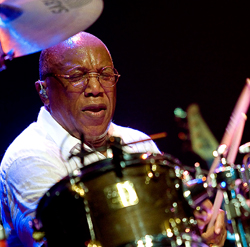
Besides measuring ambient sound, Sensaphonics dB Check ($299) is the only device that measures in-ear SPL during use. It calculates safe exposure times for Sensaphonics and Shure IEMs using both OSHA and NIOSH standards.
OSHA’s permissible exposure limit (PEL), established in 1969, is 8 hours for 90 dBA. OSHA uses a 5 dB exchange rate, meaning when sound pressure level (SPL) is increased by 5 dB, the time of exposure is halved. OSHA allows 4 hours of exposure at 95 dB, 2 hours at 100 dB allows and just 1 hour at 105 dB.
The more conservative NIOSH standard is only 85 dB for an 8-hour day, but uses a 3 dB exchange rate, so time of exposure is halved when SPL is increased by just 3 dB, meaning 91 dB allows only 2 hours of safe exposure, 9 dB quieter than OSHA’s 2-hour guideline of 100 dB. What would NIOSH recommend for 1 safe hour? Answer: 94 dB, 11 dB lower than OSHA.
A typical rock or pop stage is 105 dB, meaning that after an hour, “temporary threshold shift” has begun. One reason that modern concert sets often have a “breakdown section” of quieter music in the middle is that it allows hearing to recover slightly during the course of a show. Intermissions have a similar effect (and help sell drinks and merchandise).
Breakdown sections also help in venues with sound level restrictions that are measured over time (Leq), as they bring the average sound level down before the end of the show so it can have a big ending. For performers, just sitting out one or two songs backstage can help.
Hearing Threshold Shift
Loud sounds cause the ear to gradually “shut down,” which is called temporary threshold shift. Cilia, the tiny hairs suspended in fluid in the middle ear, flatten out. After a period of quiet time, ears recover and hearing comes back, kind of like your lawn after being trampled at a garden party.
Without time to recover, temporary threshold shift becomes permanent, but it happens so gradually that it’s hard to notice. This is why annual hearing tests are the best way to monitor hearing health.
Custom, Generic, Or Buds
Custom IEMs are made from an impression of the individual’s ears to provide an exact fit and up to 26 dB of isolation. iPhone-type ear-buds provide little isolation, resulting in monitoring at much higher levels on loud stages, enough to begin temporary threshold shift in a fraction of the time of custom or generic IEMs with good isolation, guaranteeing hearing injury in the long run.
Generic IEMs may not fit smaller ear canals, aren’t as comfortable as custom IEMs, but as noted, they do provide varying levels of isolation.
Both Ears
Using two IEMs versus just one is critical to long-term IEM use. When IEMs are used in both ears, an effect known as binaural summation produces a perceived 6 dB increase in volume without raising their actual output level. This is “free money.”
If the left and right IEM each produce 90 dB and both are inserted, the brain sums them together and the musician hears the equivalent of a 96 dB signal in one ear only. The perceived 6 dB increase quadruples exposure time and comes without the potential hearing damage of an actual 6 dB of higher sound pressure level.
Using a single IEM combined with a wedge in order to have “the best of both worlds” results in higher monitoring levels. Single IEMs must keep up with ambient stage sound in the other ear and those performers “balance” the sound in both ears by turning up their packs by another 6 dB or more, quartering safe exposure time.


